Windsor, Center of Culture and Learning
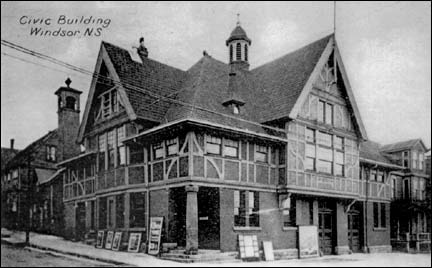
Windsor’s Civic Building 1910
By 1790, Windsor also had a Library and Reading Society in addition to the college, and the town had become recognized as a Centre of Culture and Learning. Wealthy Haligonians registered their children at the college and were coming to visit regularly and partaking of the wonderful fishing, hunting, cricket and hurley matches and horse racing.
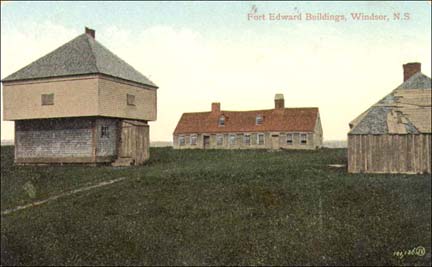
Fort Edward Blockhouse 1920
Because of all the sporting activities at the college between the students and the military of Fort Edward and Halifax, journalists began to refer to the town as the Playground of Halifax and the Athens of Nova Scotia. Windsor had quickly become a place of some significance in the British Empire and of very great importance to Halifax. All this activity led to the necessary improvement of the sixty mile road between Halifax and Windsor, for it was used more and more as the years sped by. It was the longest road in the province at the time, and was as important to the military as it was to the citizens of Halifax.
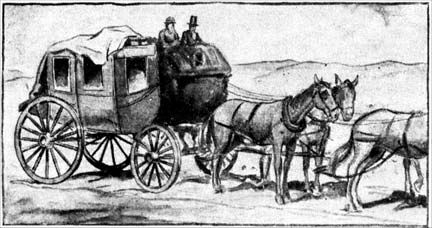
Stage Coach 1816
Travel by horse and carriage was difficult and took about six hours. By 1816, a stage coach line had been instituted and was the first in the Maritimes. The trip cost $5.oo and took the better part of a day.
Written beneath this picture was – ” Above is a reproduction by Robert W. Chambers, Staff Artist of the Halifax Chronicle, one of the old stage coaches which operated between Halifax and points in the Annapolis Valley between the years 1829 and 1869 when the railway was opened between Windsor and Annapolis.
Unfortunately the original photograph of the coach, the property of Miss Lillie Manning of Greenwich, King’s County, was not suited for reproduction but the above sketch is accurate in every detail and was carefully drawn from the original.
According to A.H.W. Eaton’s History of King’s County, the fare in this coach from Halifax to Annapolis was $10.00, the journey occupying the best part of two days. The History also relates an interesting story of an accident on the line when sir Charles Tupper was a passenger, escorted by Coachman Walsh.”
In 1836 the longest covered bridge ever to be built in the province crossed the Avon River at Windsor, thus connecting Halifax with the bay of Fundy communities and Establishing Windsor as the “Gateway to the Annapolis Valley”. Because of the lumber and gypsum industries that were developing, ship building became a necessity in order to transport the products first to America, and eventually to ports around the world.
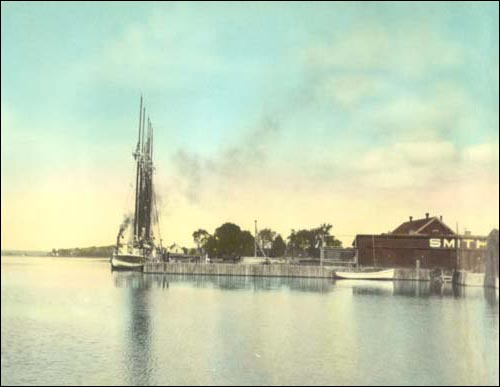
Windsor Waterfront – Shipyards
Between 1836 and 1890, Windsor became a world-renowned sea port and ship building centre, the third largest in Canada, second only to Montreal and Saint John, New Brunswick in terms of goods shipped. Ships from Boston and Saint John visited Windsor regularly where passengers accessed stage coach transportation to Halifax.
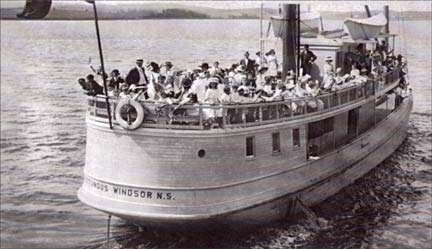
Windsor’s “Rotundus” Ferry
Copyright – Garth Vaughan December 8, 2000
Center of Culture
Following the Expulsion of the Acadians, the English changed the name of the town from Piziquid to Windsor, and gave the name of Avon to the river. They then called for immigrants from America and the British Isles. Soon ‘Planters’ arrived from New England and settled much of the land which the Acadians had cultivated. Groups of people arrived from Ireland, Scotland and England and made new homes for themselves in the Windsor area.
An American Rebellion against the English, known as The War of Independence soon followed in America. As hostilities were resolved with an American victory, those who
remained loyal to the British Crown then left America for Canada, and many of them settled in and about Windsor. These United Empire Loyalists represented a cross section of the population of the land from which they came. Some were farmers and tradesmen while others were academics and professionals.
Agriculture was important to all and the new settlers made great use of the fine soil prepared by the Acadians. By 1865, an Agricultural Fair was established at Fort Edward, and with the fair, Horse Racing began as a serious sport.
Copyright – Garth Vaughan December 8, 2000